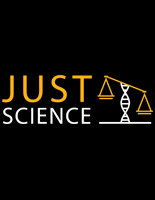Eyewitness testimony
Effects of Visual Imagery Ability of Hypermnesia for Pictures and Words
Final Report: Evaluating a New Technique for Improving Eyewitness Identification
Science of Advocacy
Mock Jurors’ Evaluations of Eyewitness Identification Evidence Based on Appearance Change and Associated Instructions
Cognitive Science and the Law
The Impact of False or Misleading Forensic Evidence on Wrongful Convictions
How potential jurors evaluate eyewitness confidence and decision time statements across identification procedures and for different eyewitness decisions
The effect of viewing distance on empirical discriminability and the confidence-accuracy relationship for eyewitness identification
The number of fillers may not matter as long as they all match the description: The effect of simultaneous lineup size on eyewitness identification
One perpetrator, two perpetrators: The effect of multiple perpetrators on eyewitness identification
Expanding Research to Examine the Impacts of Forensic Science on the Criminal Justice System
In 2004, the National Institute of Justice created the social science research on forensic sciences (SSRFS) research program to explore the impact of forensic sciences on the criminal justice system and the administration of justice. Much of the early research from the SSRFS program focused on DNA processing and the use of DNA in investigations and prosecutions.
See the YouTube Terms of Service and Google Privacy Policy
Juror Decision Making in Eyewitness Identification Cases
Police Lineups: Making Eyewitness Identification More Reliable
Critical Analysis of Police Interview Techniques
Enhancing Enhanced Eyewitness Memory: Refining the Cognitive Interview
Eyewitness Responses to Leading and Misleading Questions under the Cognitive Interview
Confidence, Latency, and Accuracy in Eyewitness Identification Made from Show-Ups: Evidence from the Lab, the Field, and Current Law Enforcement Practices
Wrongful Convictions: The Latest Scientific Research and Implications for Law Enforcement
How Collaboration Between Researchers and Police Chiefs Can Improve the Quality of Sexual Assault Investigations: A Look at Los Angeles
Panelists discuss the application of research findings from an NIJ-sponsored study of sexual assault attrition to police practice in Los Angeles. There are three main focal points: (1) the mutual benefits of researcher/practitioner partnerships, (2) the implications of variation in police interpretation of UCR guidelines specific to clearing sexual assault (with an emphasis on cases involving nonstrangers), and (3) the content of specialized training that must be required for patrol officers and detectives who respond to and investigate sex crimes.
See the YouTube Terms of Service and Google Privacy Policy



